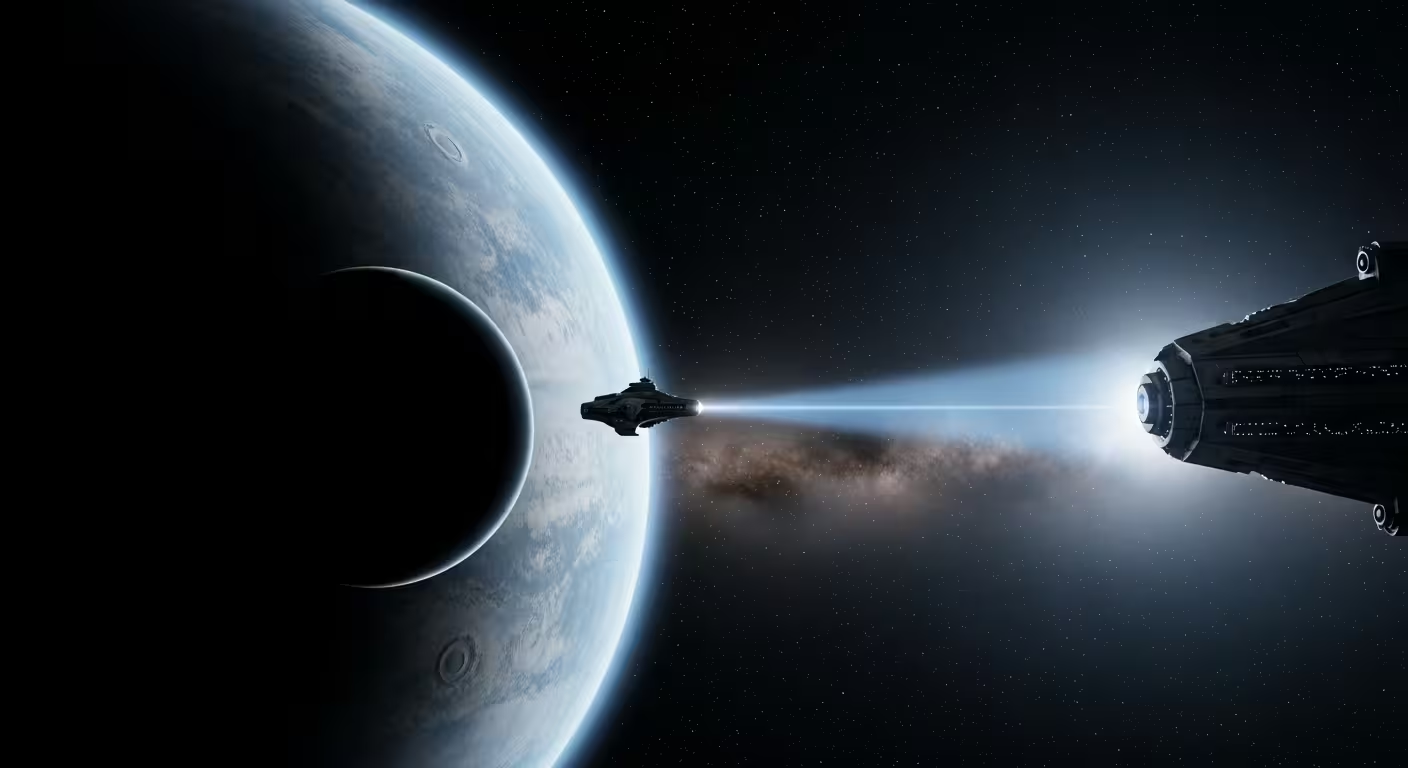For generations, the final frontier has felt like an exclusive club. Gazing up at the stars, the dream of space exploration seemed reserved for a select few—the elite astronauts, the brilliant engineers at NASA, and the billionaires funding their own rockets. It was a spectacle to watch, but a distant one.
What if that first, crucial step towards becoming an explorer didn’t require a multi-million pound ticket, but simply a click of a button?
This is the promise of the modern free space simulator. These powerful educational tools are democratising the cosmos, transforming it from a distant dream into a personal, interactive experience.
They break down the financial and geographical barriers that have traditionally made space science seem inaccessible. Imagine a classroom without borders, where anyone with an internet connection can engage in genuine space exploration. This is the new reality.
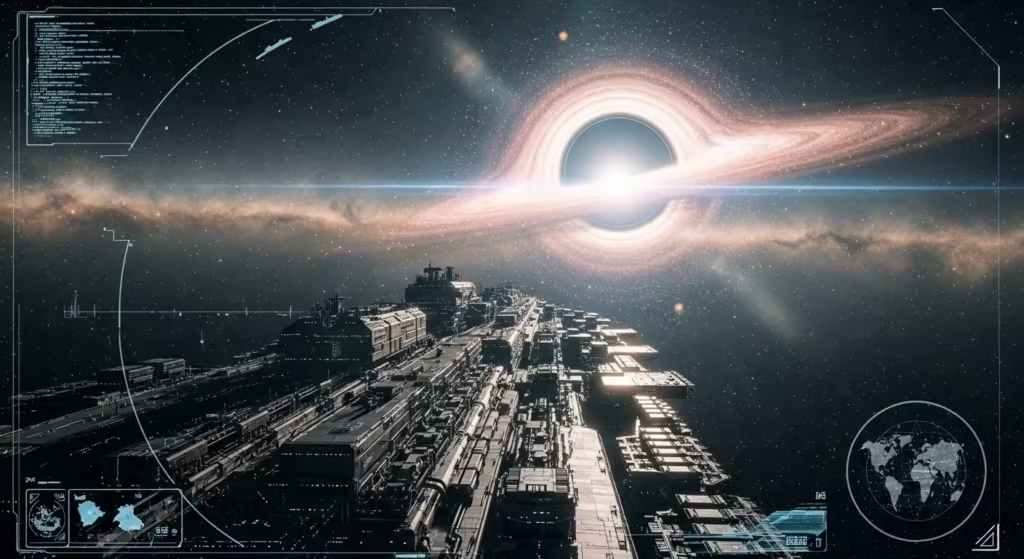
The impact of this free access is profound and multifaceted. For the student, a physics-based space exploration game online becomes a hands-on laboratory. Concepts like orbital mechanics and Newtonian physics shift from abstract equations in a textbook to tangible forces they must master to successfully complete a mission.
For the educator, it’s a dynamic, engaging resource to light a spark in the classroom, offering a free STEM activity for homeschooling or traditional lessons that brings complex concepts to life – and for the eternal dreamer, it provides a cosmic sandbox—a place to satisfy curiosity, pilot a spacecraft on a mission to Mars, or recreate an Apollo moon landing simulation online from their own home.
While incredibly entertaining, to call these programs just a free space game is to miss their core function. They are unseen educational engines, built on a foundation of real aerospace engineering and scientific principles.
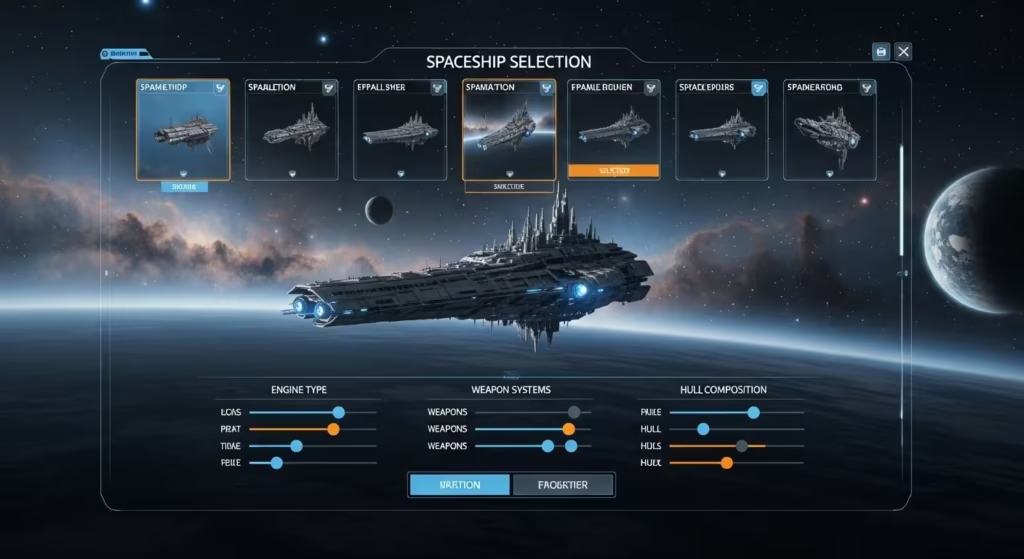
The Gamification of Space
This is where gamified learning for space science truly shines. You don’t just read about a Hohmann transfer orbit; you must execute one perfectly to reach your destination, learning the very real consequence of every miscalculation. This process of learning orbital mechanics with a game cultivates essential problem-solving skills and critical thinking.
The challenge of a space station docking procedure simulator, for instance, forces you to understand velocity, momentum, and spatial awareness, often driving you to research and learn more—a process known as tangential learning.
We are now planting the seeds for a galactic future. The historic Apollo Generation was inspired by watching a single, grainy moon landing. Today, we have the potential to create a “Simulation Generation,” inspired by personally landing on the moon a thousand times.
A free online space simulator for students in a remote village can unlock a passion for astrophysics. Another might use a virtual astronaut training programme free of charge to confirm their desire to pursue a career in aerospace.
It’s no secret that many of today’s engineers at organisations like NASA had their first taste of space through early, often simple, simulations and planetarium software.
Beyond individual learning, these free space simulators often foster vibrant online communities. Users gather in forums and social media groups to share knowledge, create modifications, and challenge one another with complex scenarios like simulating a mission to Jupiter’s moons.
This collaborative spirit beautifully mirrors the international cooperation of real-world space agencies, building a global network of enthusiastic learners and space simulation enthusiasts.
To give you a clearer idea of the experiences available, here is a comparison of popular free simulator types.
| Simulator Focus | Typical Learning Outcomes | Ideal For |
|---|---|---|
| Realistic NASA-style Space Flight | Orbital mechanics, trajectory planning, delta-v budgeting, reentry physics. | Aspiring engineers and serious space enthusiasts. |
| Solar System & Galaxy Exploration | Cosmology, celestial mechanics, scale of the universe, exoplanet science. | Astronomy students and cosmic dreamers. |
| Rocket Design & Launch | Rocket equation, engineering problems, thruster control, aerodynamic stability. | Hands-on learners and future rocket scientists. |
| Historical Mission Recreation | Space history, mission logistics, the challenges of early space navigation. | History buffs and those seeking a narrative experience. |
The core mission is clear: to make space exploration an accessible, shared human experience, not a privileged one.
By providing free access to these tools, we are collectively investing in the dreamers, the problem-solvers, and the explorers of tomorrow. The journey of a thousand miles begins with a single step.
The journey to the stars begins with a single simulation.
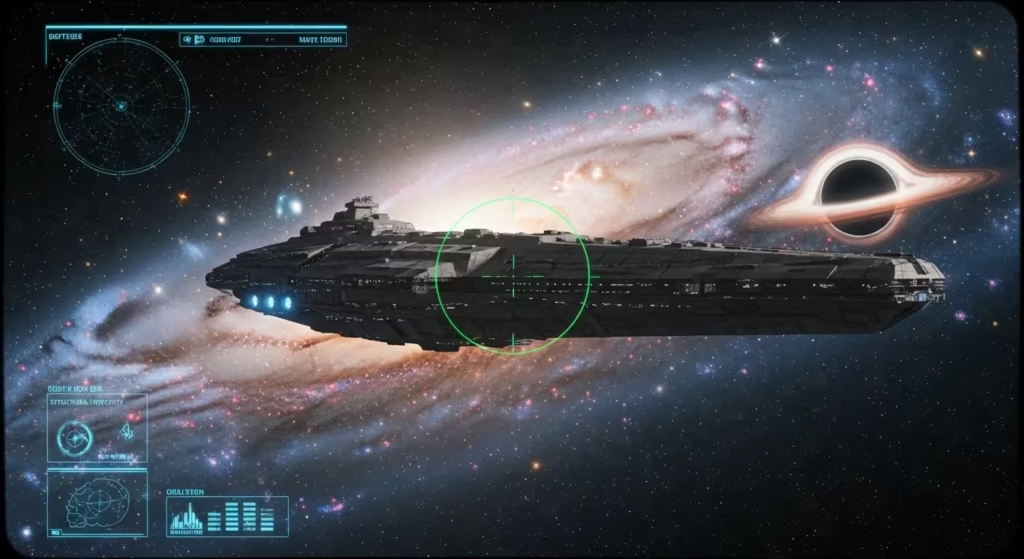
Why Free Online Space Simulators Matter for Modern Learning
Free space simulators have revolutionised how students and space enthusiasts engage with science education.
These browser-based tools combine authentic aerospace engineering principles with interactive learning experiences, making complex concepts like orbital mechanics, celestial navigation, and mission planning accessible to anyone with an internet connection.
Unlike expensive training programs used by professional astronauts, these educational simulation platforms democratise access to NASA-grade technology, allowing learners to understand planetary motion, spacecraft dynamics, and astrophysics through hands-on experimentation.
Whether you’re interested in rocket science education, learning about the solar system, or exploring space exploration technology, these web-based space learning tools offer unprecedented opportunities for both formal education and self-directed learning.
9 Free Space Simulators to Launch Your Cosmic Journey
Here are the 10 best free online space simulators perfect for students, educators, and anyone dreaming of space exploration. From official NASA tools to accessible browser-based experiences and authentic simulation software, there’s something for every level of interest and expertise.
Whether you’re seeking realistic spacecraft dynamics or interactive learning environments, these premium free space simulation tools offer unparalleled educational value.
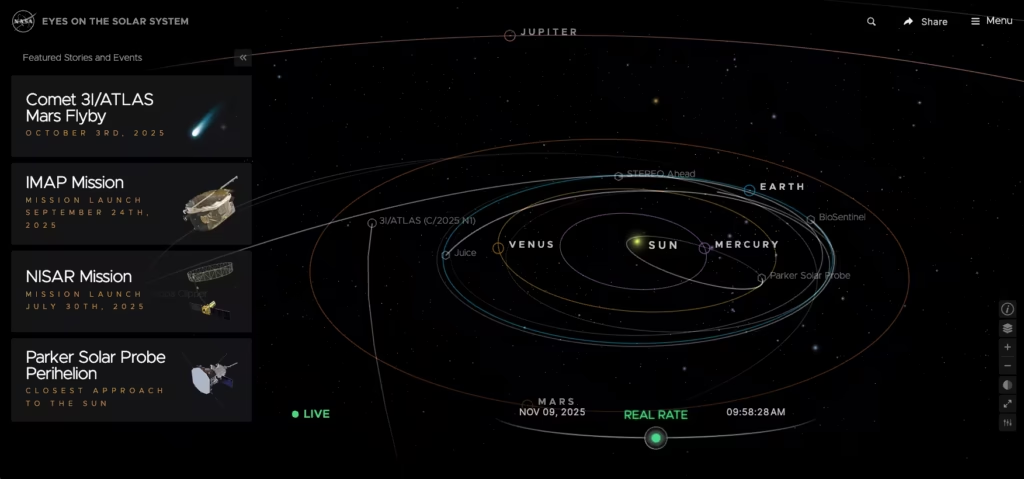
1. NASA’s 3D Solar System Simulator
NASA’s Eyes on the Solar System is an advanced visualisation tool created by NASA’s Jet Propulsion Laboratory, designed to offer an immersive, interactive experience of space exploration which is perfect for both educators and students of all ages.
This browser-based tool allows you to follow more than 150 real NASA missions, visualising their journeys through a detailed, 3D simulated live view of the solar system.
You can fly alongside spacecraft in real-time, explore planets, moons, asteroids, comets, and observe the intricate choreography of past, present, and even future space missions.
With Eyes on the Solar System, you are empowered to rotate, compare and explore objects, modulate perspective and lighting, and even fast-forward or rewind time to see the solar system from 1950 to 2050. This makes it possible to witness key moments like the Voyager spacecraft crossing into interstellar space or accompany the Cassini mission as it flies by Saturn’s moons.
The platform is continually updated with the latest NASA data for authenticity—making it a go-to resource for anyone interested in planetary science, astronomy, or just a cosmic adventure.
To take your own interplanetary journey, experience the interactive platform directly via NASA Eyes on the Solar System.
Best for: Gaining quick cosmic perspective. Ideal for students and astronomy enthusiasts who want to understand our solar system from multiple vantage points throughout time.
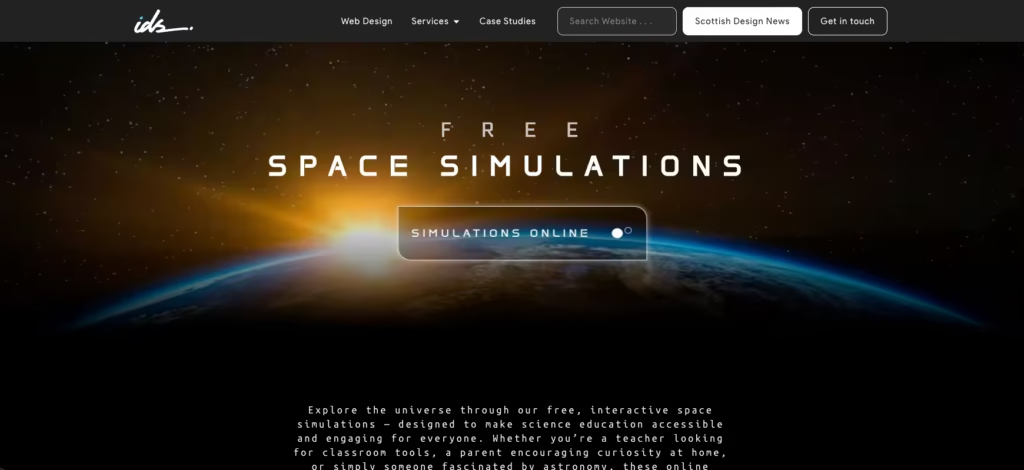
2. The Inverness Design Studio’s Free Space Simulations
The Inverness Design Studio’s “Free Space Simulations” offer a fantastic collection of browser-based, interactive space experiences designed to be both educational and engaging.
Users can explore realistic space physics, orbital mechanics, and planetary motion through various fully interactive simulations such as the free Black Hole Simulator, 3D Solar System Explorer, The Great Void immersive 3D sci-fi simulator, and the Space Station Builder, among others.
These experiences are free of charge and require no downloads, making advanced space exploration concepts accessible to everyone directly through their web browser. Perfect for the classroom, these simple space simulations allow instant access without ads, directly in the browser.
This collection is aimed at inspiring curiosity and learning in astronomy and STEM fields, providing a hands-on way to understand complex cosmic phenomena. It is ideal for educators, students, or anyone interested in space, offering a seamless and immersive experience that brings the universe closer to home.
You can start your journey into space exploration with these free tools by visiting the Inverness Design Studio Free Space Simulations page.
Best for: Beginners and casual explorers. Perfect for students and space enthusiasts looking for an easy-to-access introduction to space simulation without technical barriers. Offers a free, advertisement-free experience.
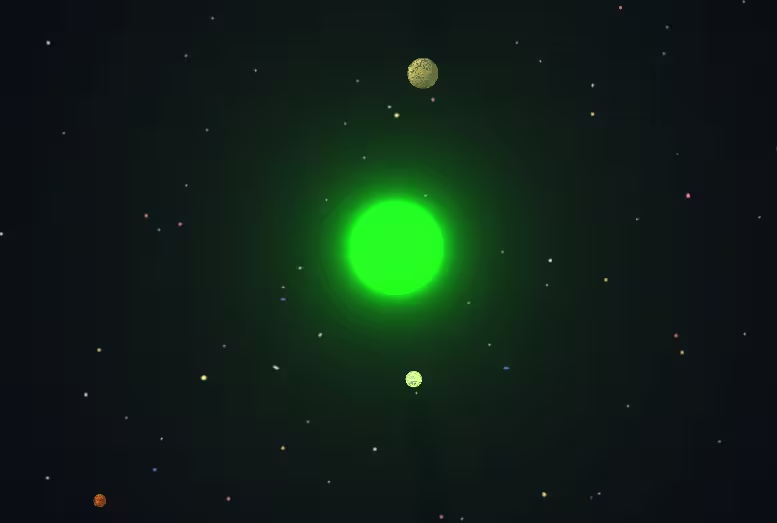
3. SpaceSim
SpaceSim is a sophisticated web-based simulator that offers a deep and realistic experience focused on orbital mechanics and mission planning.
Designed to challenge users to think like aerospace engineers, SpaceSim enables you to manage complex space missions by simulating Newtonian gravity and detailed orbital dynamics.
The platform provides tools for editing, adding, and moving celestial bodies while calculating precise orbits and trajectories, making it an ideal educational resource for understanding spacecraft navigation and space mission design.
By using SpaceSim, you can explore a dynamic model of space where every maneuver and orbit reflect real physical principles, allowing for mission planning scenarios and experimentation within a highly realistic simulation environment.
For those interested in delving into the technicalities of space travel and orbital mechanics, SpaceSim offers an engaging and intricate platform accessible directly from your browser.
More about this advanced simulator and its features can be explored on Matthew Roberts’ Orbital Mechanics Simulator.
Best for: Aspiring aerospace engineers and serious space enthusiasts who want to master orbital mechanics and mission planning through a browser-based interface.
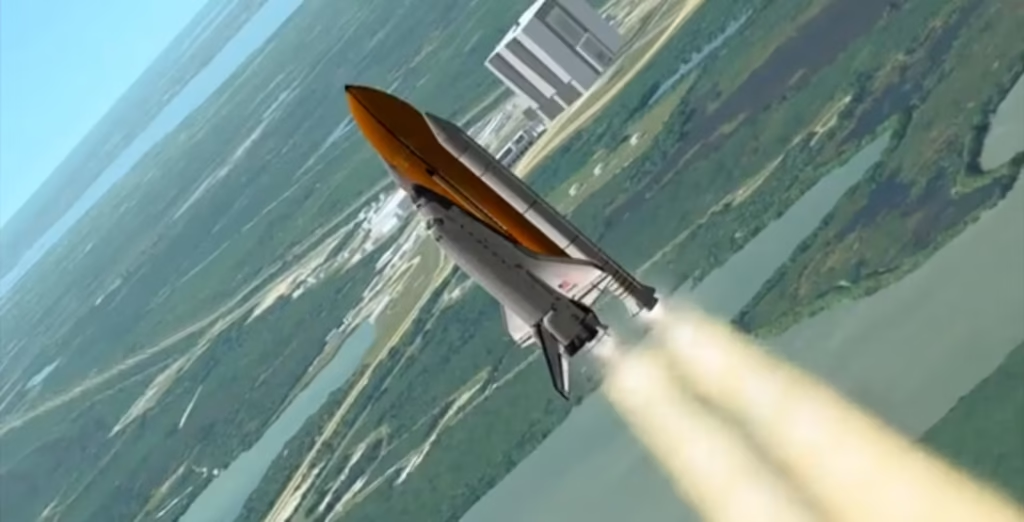
4. Orbiter
Orbiter is a free space flight simulator known for its highly realistic physics model, offering enthusiasts the opportunity to experience authentic spaceflight challenges. Developed by Martin Schweiger, it allows users to perform complex maneuvers such as docking with the International Space Station or piloting historical spacecraft like the Space Shuttle Atlantis.
The simulator features detailed Newtonian physics, covering everything from ground movement to orbital and interplanetary flights, making it a popular choice for those seeking a deep, educational spaceflight experience.
Users can download Orbiter for free and enjoy a variety of real and fictional spacecraft, experience accurate planetary motion, and experiment with complex mission scenarios. The simulator supports customisation with add-ons, including new spacecraft and planetary bases created by the community, enhancing its breadth and realism.
For those interested, the full simulator and its extensive features can be explored and downloaded through major freeware platforms and detailed information is available on Wikipedia’s Orbiter page.
Best for: Spaceflight purists seeking authentic physics simulation. Excellent for those who want to experience the true challenges of spacecraft piloting with realistic physics.
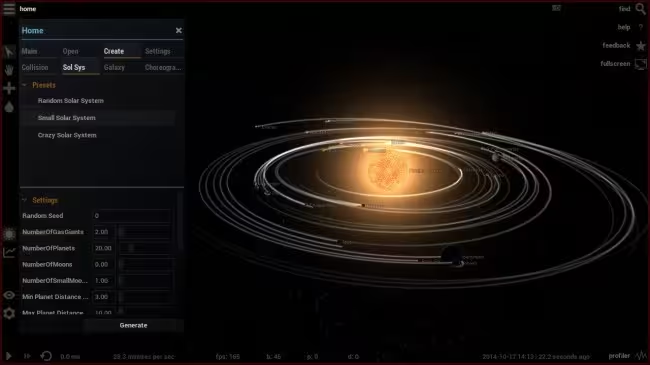
5. Universe Sandbox
You can try Universe Sandbox is a highly sophisticated gravity and physics-based universe simulator that allows users to create and manipulate entire cosmic environments. Its unique capability to simulate planetary collisions, solar system formation, and the complex effects of gravity enables users to conduct their own cosmic experiments.
The software combines real astronomical data with user-generated scenarios, offering a deeply interactive experience where you can adjust variables such as gravity, mass, and velocity to see how they affect celestial bodies and systems.
Notable features include climate simulation on planets, detailed material and composition simulation, animated star surfaces, and realistic stellar evolution including supernovae. It also supports dynamic soundtracks and visualizations like glowing craters and solar flares, making it both a powerful educational tool and an engaging platform for visual learners and cosmic creators.
Available on multiple platforms, Universe Sandbox appeals to anyone eager to understand astrophysics through hands-on experimentation with planetary systems and cosmic phenomena.
To explore this immersive simulation software, visit the official Universe Sandbox website. You can also try Universe Sandbox free on Steam.
Best for: Cosmic creators and visual learners. Ideal for anyone who wants to understand astrophysics through hands-on experimentation with gravity and planetary systems.
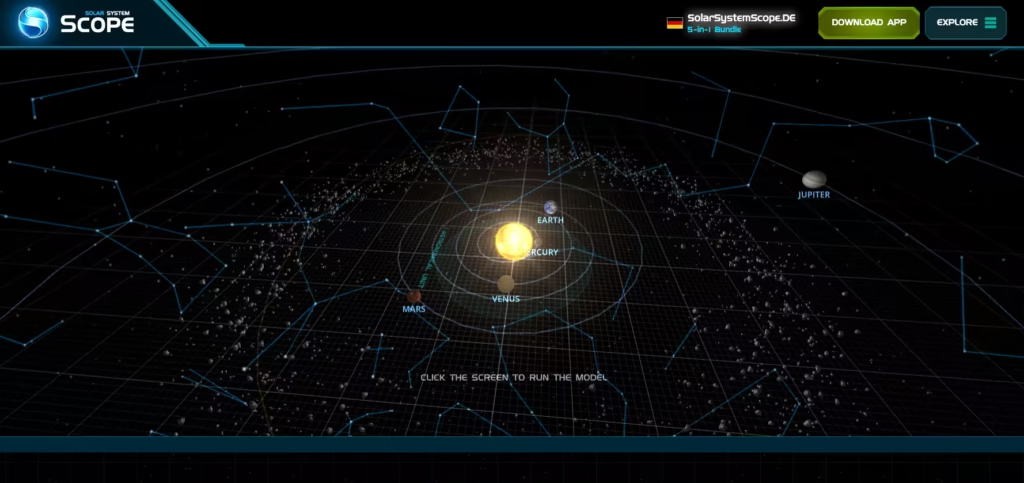
6. Solar System Scope
Solar System Scope is a beautifully rendered online planetarium providing an interactive, easy-to-use model of our solar system and beyond. It features a clear, intuitive interface that makes complex astronomical concepts accessible to users of all ages and knowledge levels, making it especially effective for visual learners and classroom settings.
Users can explore detailed views of planets, dwarf planets, moons, comets, and constellations, with realistic maps based on NASA data from spacecraft such as Messenger, Cassini, and the Hubble Space Telescope.
The tool allows you to switch between a realistic and orrery model, simulate night skies from any location on Earth, and explore celestial positions across past and future dates.
Ideal for teachers and students, Solar System Scope combines engaging visuals with educational content, allowing in-depth exploration of planetary orbits, compositions, and physical characteristics. It offers dynamic views like the Solar System View for a relative size and distance perspective, and the Planetarium View for immersive star-gazing experiences.
The web-based application is free to use, with premium features available for enhanced graphics. Discover this interactive planetarium and enrich your astronomy learning via the official Solar System Scope website.
Best for: Visual learners and classroom settings. Excellent for teachers and students who need an engaging, visually appealing way to explore our solar system and beyond.
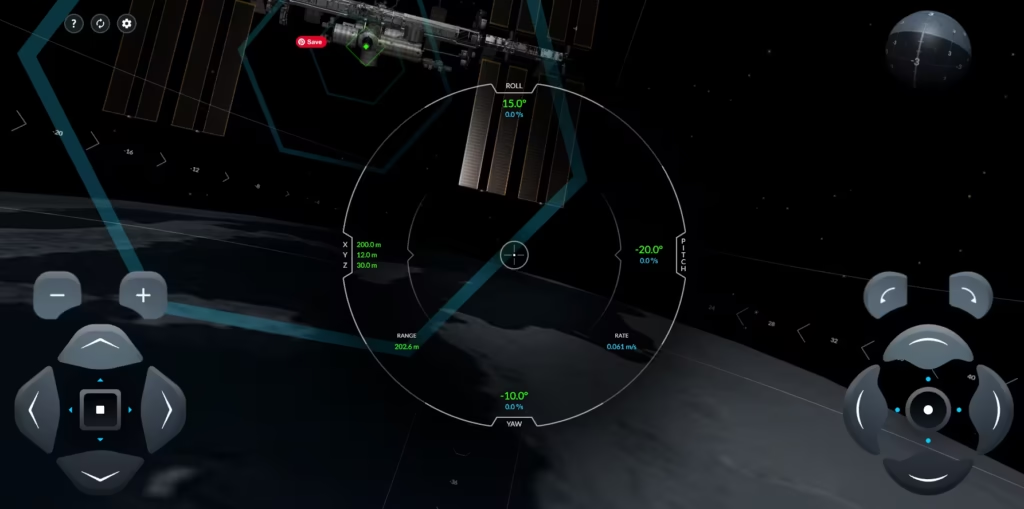
7. SpaceX’s ISS Docking Simulator
SpaceX’s ISS Docking Simulator is an official, browser-based tool that replicates the actual interface used by Crew Dragon astronauts to manually dock with the International Space Station.
This simulator offers a highly authentic experience of one of spaceflight’s most delicate operations, requiring patience, precision, and skill to successfully complete the docking maneuver. Players use controls to adjust rotation (roll, pitch, yaw) and translation (up, down, left, right, forward, backward) with precision toggles to make fine movements necessary for alignment.
The goal is to maneuver the spacecraft so that all green numbers—indicating positional corrections—fall below 0.2, signaling a successful docking. The interface mirrors the real system used by astronauts during missions, providing a realistic challenge of spaceflight dynamics and control.
Users can try docking in the simulator for free at the official SpaceX site: SpaceX ISS Docking Simulator.
Best for: Modern spaceflight enthusiasts. Perfect for those who want to experience the real-world challenges astronauts face when docking with the International Space Station.
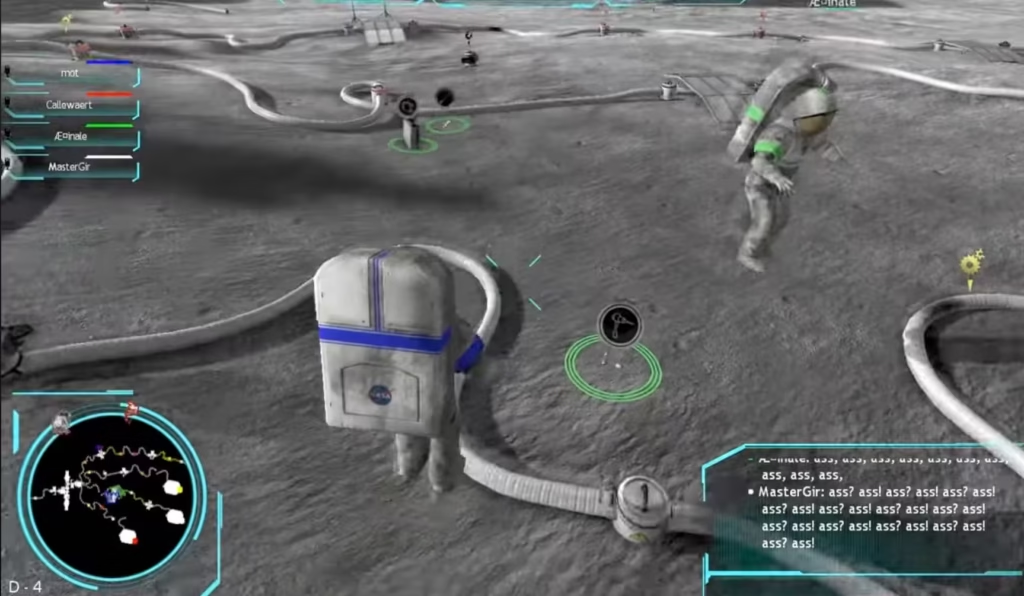
8. Moonbase Alpha
Moonbase Alpha is a NASA-developed simulation game available on Steam that challenges players to restore operations at a lunar outpost after it has been damaged by a meteor strike.
Set in the year 2025, players take on the role of astronauts tasked with repairing vital equipment such as life support systems, solar panels, and oxygen generators to save the team before oxygen runs out.
The game emphasises teamwork and problem-solving, allowing up to six players to collaborate online using voice communication while managing various tools and repair robots.
The simulation features accurate lunar terrains and NASA technology, including driving a lunar rover and controlling repair robots to access difficult areas.
Players are scored based on the speed of their repairs, creating an engaging competitive element with online leaderboards. Moonbase Alpha is both educational and immersive, making it ideal for those interested in lunar exploration and space mission logistics. Experience this realistic lunar base operation simulation yourself on Moonbase Alpha on Steam.
Best for: Teams and collaborative learners. Great for groups interested in solving engineering challenges and experiencing what lunar base operations might entail.
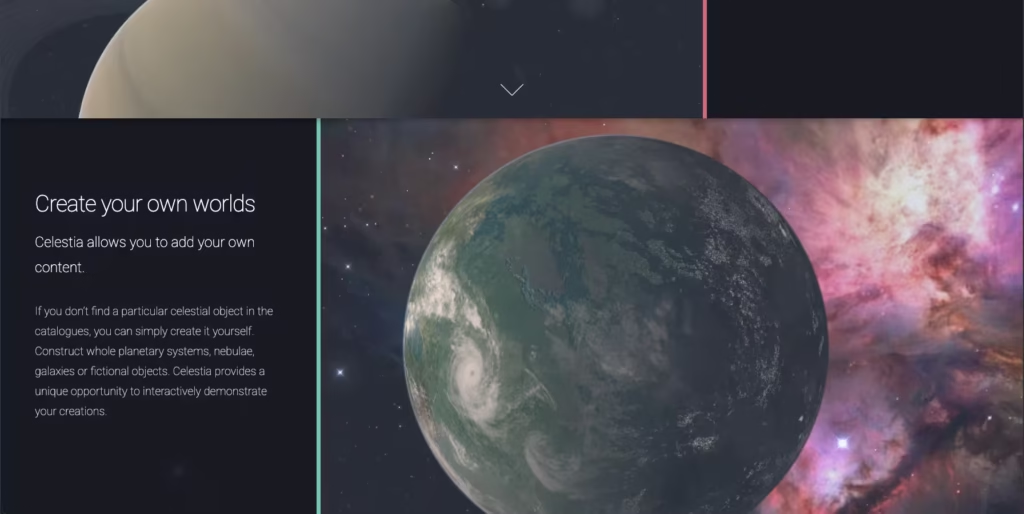
9. The Celestia Project
Celestia is a free, open-source space simulation software that allows users to explore the universe beyond the confines of Earth, unlike traditional planetarium programs. It offers real-time 3D visualisation where users can travel smoothly across vast cosmic scales, from nearby planets and moons to distant star clusters and galaxies.
The program includes an extensive catalog of over 100,000 stars, planets, dwarf planets, moons, asteroids, comets, and spacecraft, with accurate real-time orbital calculations based on the VSOP87 theory and data from observatories like Hipparcos and Gaia.
Users can navigate seamlessly using a point-and-goto interface, orbit celestial bodies, track spacecraft, and view atmospheres, sunsets, sunrises, and shadows on planets.
The software supports expandable content through downloadable add-ons, enabling the addition of new objects, high-resolution textures, and even fictional cosmic entities from sci-fi.
Celestia is ideal for astronomers, educators, students, and space enthusiasts seeking an immersive universe exploration experience. It is available for multiple platforms including Windows, macOS, and Linux, and can be downloaded from the official Celestia website.
Best for: The unbound explorer. Ideal for anyone who wants to travel beyond our solar system and explore the wider universe from any vantage point.
Expanding Your Space Learning Journey: Expert Resources and Further Reading
While these free space simulators provide exceptional interactive experiences, complementing your learning with additional resources can deepen your understanding of space science and astronomy. Educational platforms and scientific organisations offer comprehensive information about the concepts explored in these simulations.
For foundational knowledge about space exploration and astronomy, resources like Wikipedia’s space exploration article provide extensive historical context and technical details.
The Physics Stack Exchange community offers peer-reviewed explanations of complex concepts like orbital mechanics and celestial navigation that you’ll encounter in these simulators.
For those interested in pursuing advanced study in aerospace engineering or astronomy, the Khan Academy offers free STEM education courses covering rocket science, physics principles, and celestial mechanics—all concepts central to understanding space simulators.
Additionally, TED Talks features presentations from leading NASA scientists and space industry experts discussing the future of space exploration and how simulations revolutionise astronaut training. The following TED Talk from the astronaut Drew Morgan is a great example of how the platform can help inspire people to get involved in space exploration.
To stay updated on the latest developments in space technology and missions, NASA’s official website provides real-time mission data, educational resources, and information about current space programs. The European Space Agency (ESA) website offers similar resources with a European perspective on space exploration.
These space exploration simulators represent a democratisation of scientific education, making it possible for anyone to experience the thrill of mission planning, orbital navigation, and spacecraft control—skills once reserved for professional astronauts. By engaging with these free tools, you’re participating in the future of STEM education and supporting a new generation of space scientists and engineers.
Start your cosmic adventure today, and discover why millions of students, educators, and space enthusiasts worldwide are using these innovative educational simulations to explore the universe from their own classroom or home.
